On the Road is a weekday feature spotlighting reader photo submissions.
From the exotic to the familiar, whether you’re traveling or in your own backyard, we would love to see the world through your eyes.
It’s Albatrossity Monday. Followed by further adventures from frosty, UncleEb, Dagaetch and way2blue!
We’ve got some fun stuff coming up, but don’t forget to send in your pics. :-)
Albatrossity
The afternoon of our second day in the Serengeti was highlighted by a trip to Lake Ndutu, along a muddy track that hosted birds and more! At the end of the track, the lake itself was also a great place to spend some time!
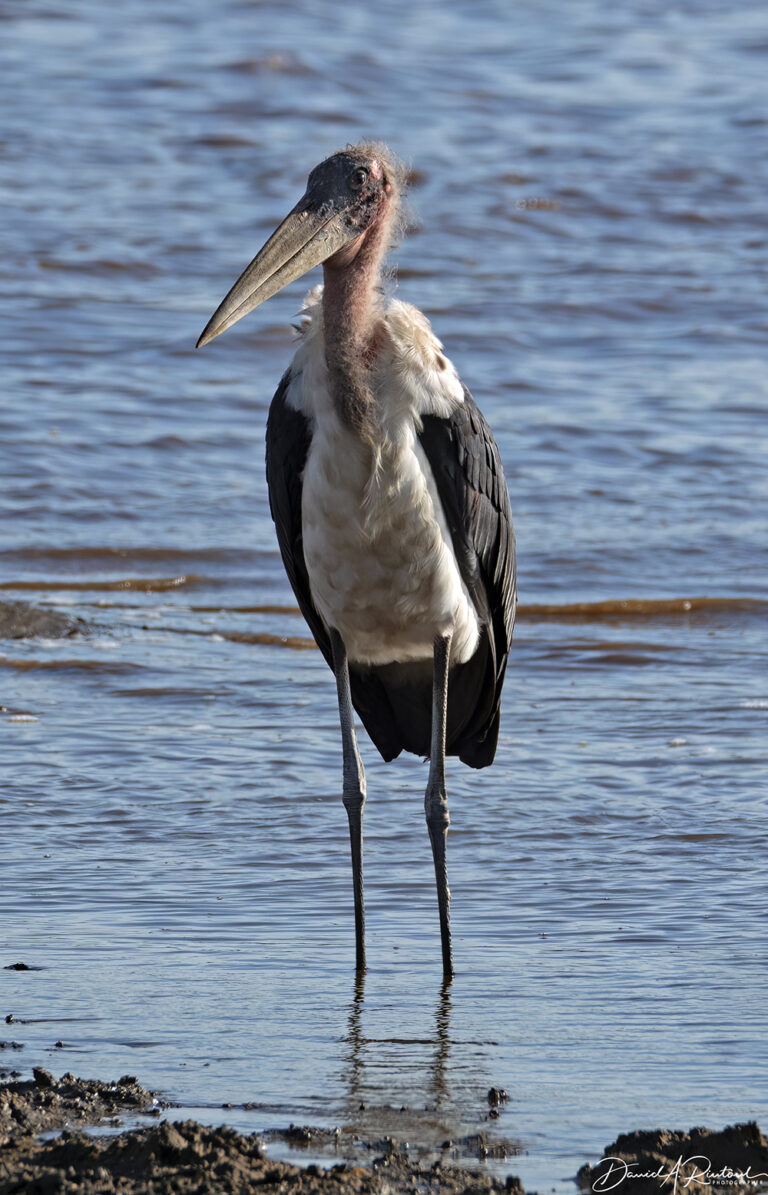
One of the homeliest birds on the planet, a Marabou Stork (Leptoptilos crumenifer), was patrolling the lake shore when we arrived. Like many other storks, it feeds on snakes and frogs and fish that it catches in or near the water, but unlike many other storks, it is also an opportunistic carrion feeder, and is often found in large numbers near a site where a predator has taken a large mammal. As you can see, the bill is not really suitable for tearing into a carcass, so it usually bullies and steals scraps from the vultures if possible. This is a very large bird, well over 4 ft tall with a 9-ft wingspan, so it can bully all but the largest vultures! Click here for larger image.
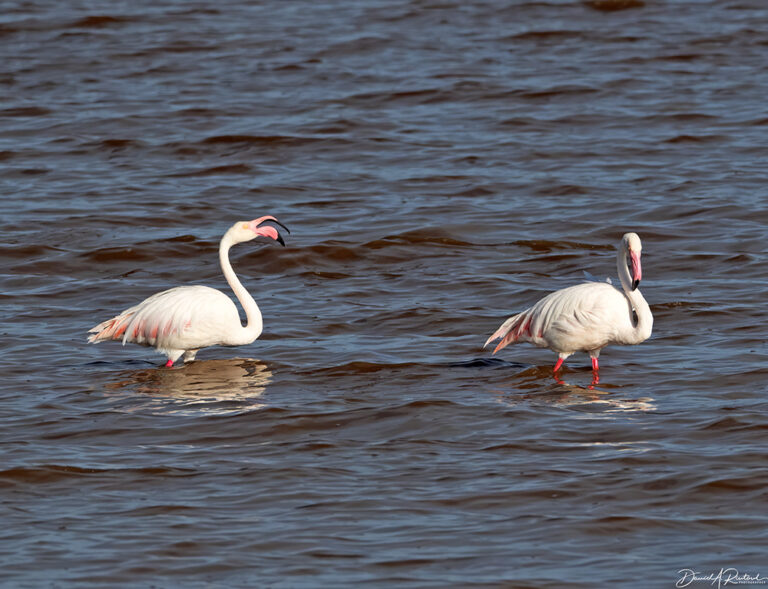
The lake featured a flock of these Greater Flamingoes (Phoenicopterus roseus) near the shore as well as a flock of Lesser Flamingos (Phoeniconaias minor) that were too far out for decent pictures. None of these birds were in the hyper-pink breeding plumage that we associate with the American Flamingo (Phoenicopterus ruber), but they are good-looking birds in their own subtle way. This is the same species that occurs along the Mediterranean coasts of southern Europe, so you may have already seen it in France or Italy. Click here for larger image.
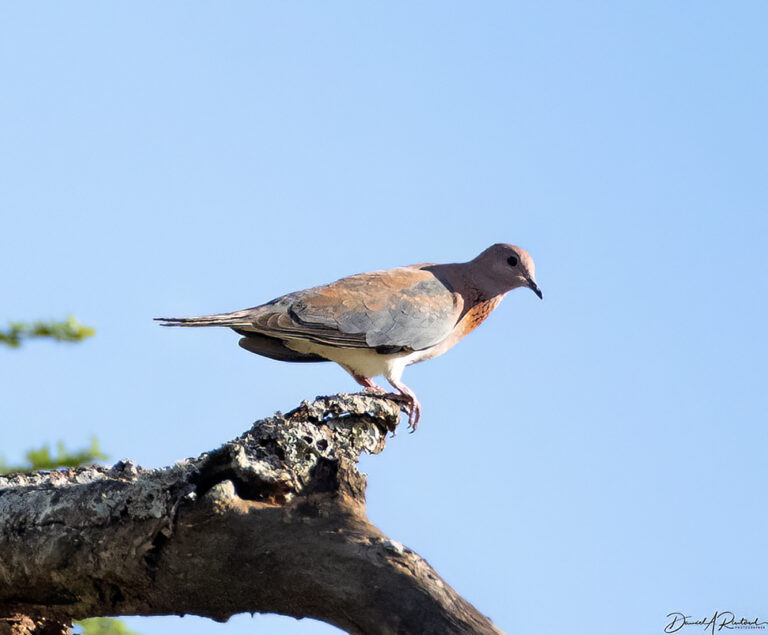
This bird is supposedly common across much of Africa and southern Asia, but as far as I know, this is the only one we saw during our time in Tanzania. It is a Laughing Dove (Spilopelia senegalensis), and according to the field guides, it is usually found relatively close to water (a description it shares with many American beers). It is approximately the size of the Mourning Dove that is familiar to North American birders, but apparently it laughs more than it mourns. Click here for larger image.
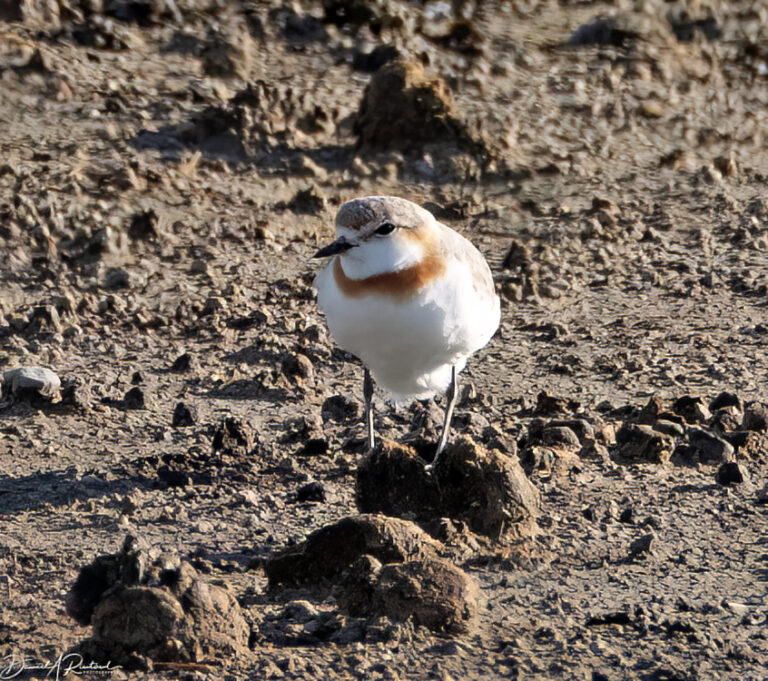
Shorebirds were skittering along the lake shore as well, and one of those was this Chestnut-banded Plover (Charadrius pallidus). Although it is found in some other parts of Africa, most of the world population of this small plover is located in Kenya and Tanzania. We saw these previously in Lake Manyara National Park, but it was great to see this guy again. Click here for larger image.

Another small plover here was the Three-banded Plover (Charadrius tricollaris), which is much more colorful than most shorebirds. Like the Chestnut-banded Plover above, this bird is only found in Africa; it is not migratory. Click here for larger image.
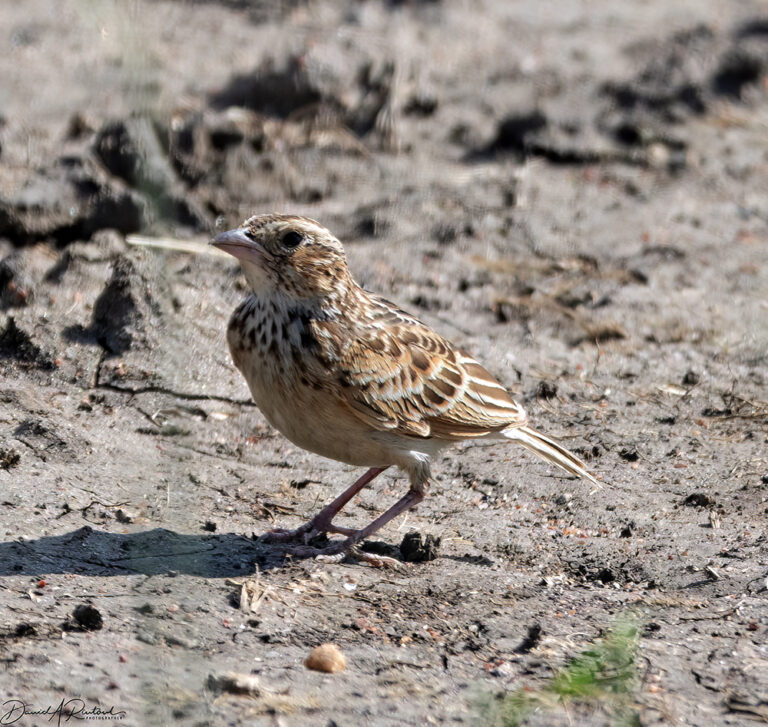
Not a shorebird, and not very colorful, but I had to include it here because of its silly name. This is a Flappet Lark (Mirafra rufocinnamomea). Many larks have an aerial display which is accompanied by singing; this one has an aerial display that has no song but has wing clapping noises instead. Personally, I think Flappet Lark sounds like an Elizabethan insult, but I will confess that, after perusing the field guide before the trip and while on the plane, it made its way to my bucket list. So I was thrilled to see it! Click here for larger image.
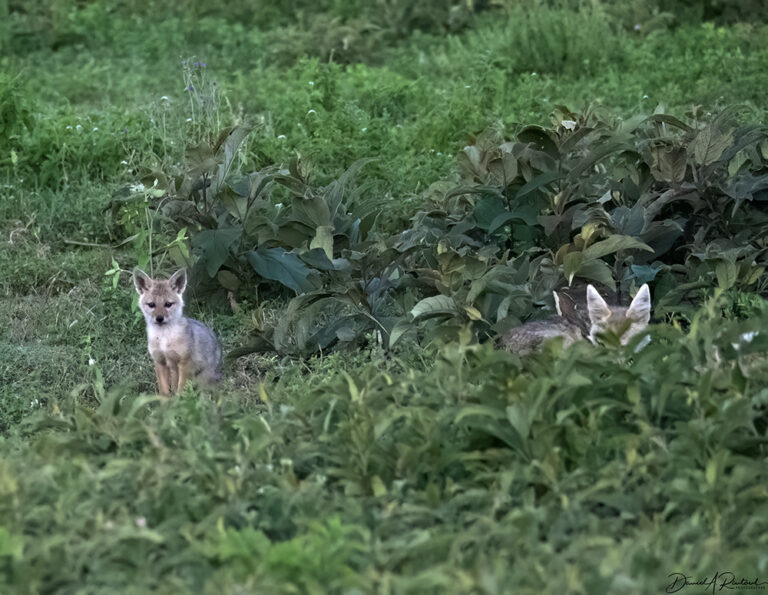
In the fading light on our way back to camp, we passed a den with some young canids peeking out. Golden Jackals (Canis aureus)! Unlike the Black-backed Jackals featured previously in this series, these guys are closely related to wolves and coyotes. You’ll have to ask Ancestry.com or 23 and Me if they are related to the batch of jackals at Balloon Juice. Click here for larger image.
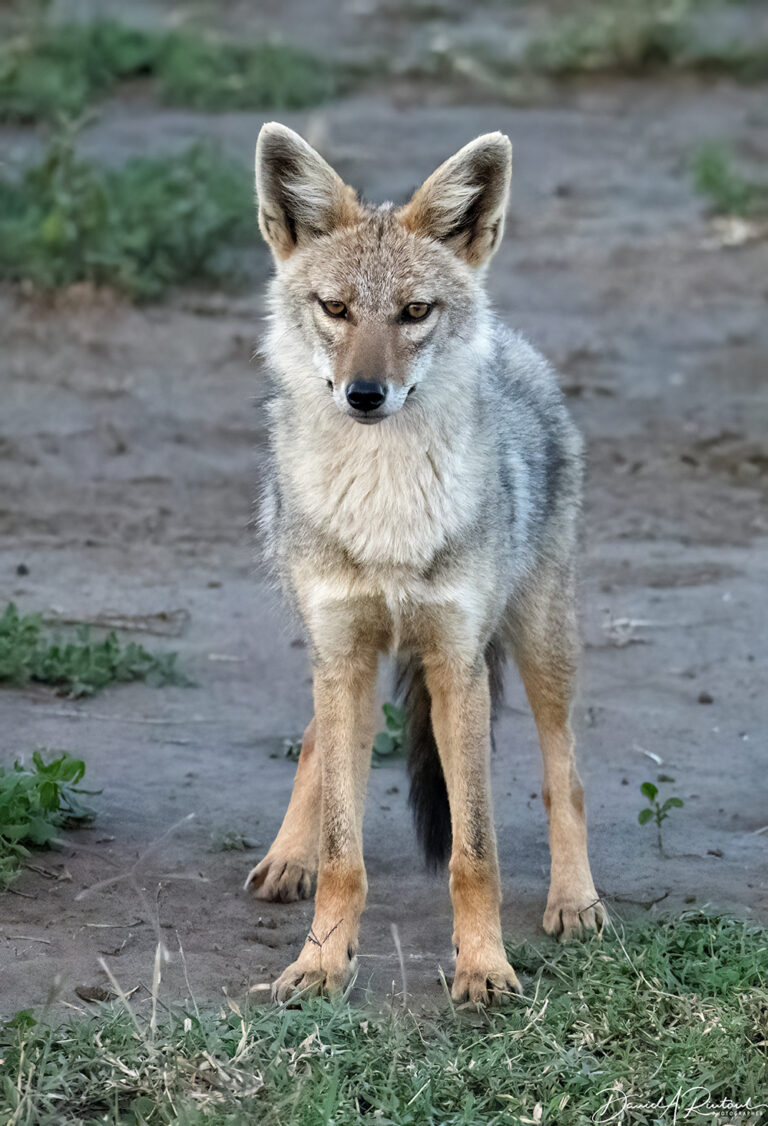
Here’s one of the Golden Jackal parents making sure that we just moved along. Click here for larger image.
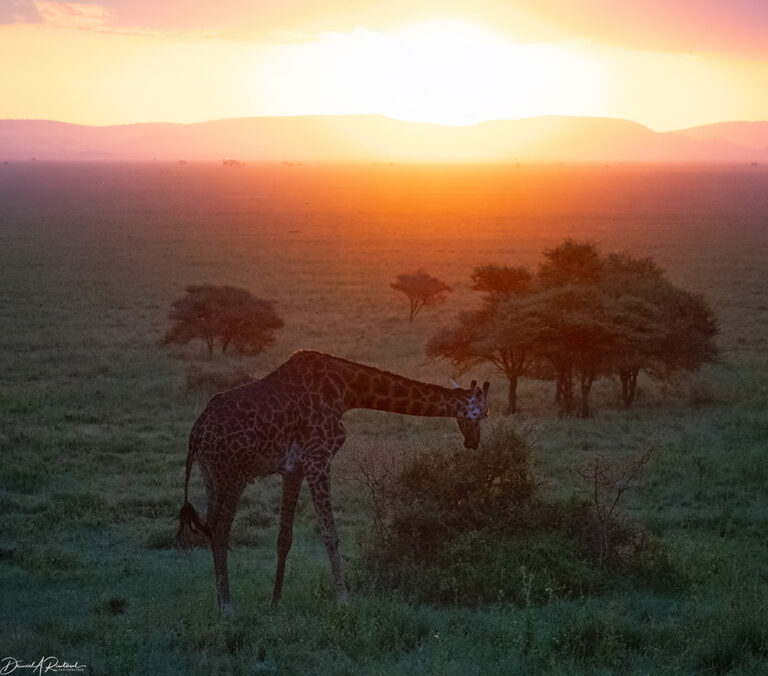
As the sun was setting we came across a group of giraffes (Giraffa camelopardalis), browsing on some low acacia trees. Better than TV. Click here for larger image.
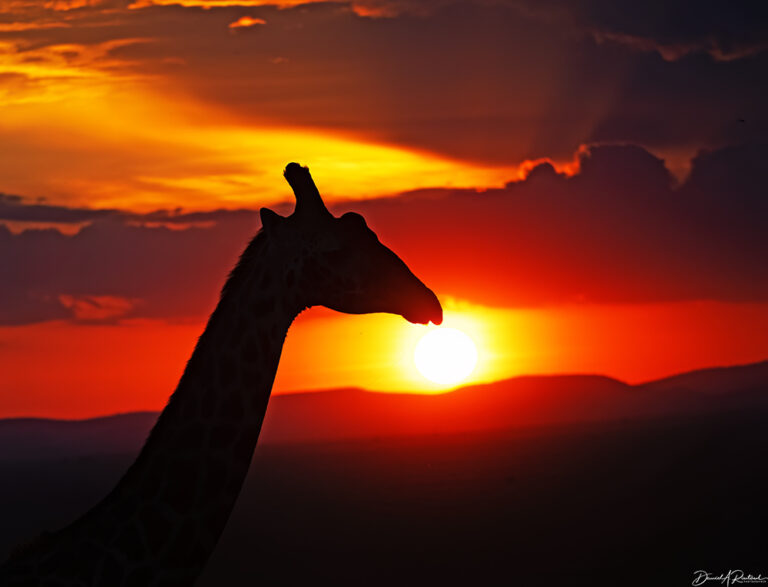
This shot was taken from the “porch” of my tent back in camp. I just waited for the right sunset moment and a giraffe wandered into the frame. It’s one of my favorite pictures from this trip! Click here for larger image.
And speaking of favorite pictures, please remember that a free 2024 Albatrossity calendar awaits the first 5 jackals who submit a first-time post to On The Road, using the “Every Picture Tells A Story” theme. More details here!

mrmoshpotato
Oh! Day 2 Round 3 of boxing lions on the Serengeti! Ding ding!
mrmoshpotato
That Flappet Lark is a handsome beast, and it knows it. Great pictures, Albatrossity.
raven
sweet
eclare
The last photo of the giraffe at sunset is perfect!
sab
Deleted duplicate
sab
Will the stork photo be on the calendar?
I am surprised at what large feet the jackal has.
J.
Great photos! Especially love the Golden Jackal.
Betty Cracker
Beautiful photos! The stork up top looks like a much larger cousin of the Wood Storks that have been hanging out in our lagoon for the past couple of weeks. Our storks are better behaved since they don’t bully other birds, at least not that I’ve seen. ;-)
Betty
Giraffe, acacia trees, sunset – gorgeous and so evocative of Africa.
Albatrossity
@sab:
Not for 2024; the pics on the calendar are all taken in the previous calendar year. Using new photos every year keeps them from getting in a rut!
It may have been on the 2019 calendar, but I’d have to check,
SteveinPHX
Thank you! That adult Jackal sure has large feet. Wonder what the evolutionary push was. Sand? Mud? Not snow for sure!
stinger
I must take exception to the description of the Marabou Stork as one of the homeliest birds on the planet — that title belongs to the turkey buzzard. Ugh.
By comparison, your guy looks very dapper, like a 19th-century gentleman with a well-tied cravat. And that beak! I’ve always been partial to generous features on a man.
sab
@Albatrossity: Oh well. Tis a very homely bird.
sab
@SteveinPHX: Big footed jackal. Looks like a labrador retriever coyote cross. Big ears (coyote) and big feet (lab).
Albatrossity
@stinger:
Well, beauty (and its opposite) will always be in the eye of the beholder. And I did say “one of the homeliest birds”, leaving room for other candidates!
You may be interested to know that for a while the taxonomists thought that storks and New World vultures such as the Turkey Vulture were more closely related than vultures and hawks. That seems to have become questionable as more sophisticated DNA analyses are done, but they do have a certain resemblance in this case!
WendyBinFL
Love the Golden Jackals! What a concept! (I notice that one is a lurker…)
Albatrossity
@SteveinPHX:
Perhaps cushioning for their long-distance runner hunting style?
SteveinPHX
@sab: See Albitrossity’s reply below. Long distance runners/hunters.
SteveinPHX
@SteveinPHX: That makes sense. Thanks. Does look like a well-muscled animal.
Torrey
It’s OK, Maribou Stork. Don’t pay any attention to what Albatrossity says. You are a fine figure of a Maribou Stork. We are grateful for your ecological work, and we are happy to see you as we sip our morning coffee.
Munira
The giraffe and the sunset – both photos – wow.
Miss Bianca
Jackals!!
And that last photo is just stunning.
Yutsano
Dat last picture…that’s postcard worthy!